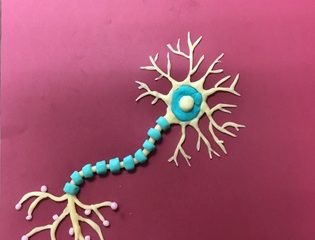My daughter Karen is a beta tester for Google Glass. As a social media professional it was a great match for Google!
Here is what I am reading today:
“”This data provides the first brain-wide evidence that cortical-thalamic pathways are profoundly altered in schizophrenia, and strongly supports the hypothesis that neuropsychiatric conditions with shared symptoms actually exist on a continuum of brain activity,” said Alan Anticevic, assistant professor in psychiatry at the Yale School of Medicine and lead author of the study.”
“In new research appearing in the journal PLOS ONE, a team led by Rosa Krajmalnik-Brown, a researcher at Arizona State University’s Biodesign Institute, present the first comprehensive bacterial analysis focusing on commensal or beneficial bacteria in children with autism spectrum disorder (ASD).”
“The impact of physical activity on the ventral hippocampus specifically has not been deeply explored, said senior author Elizabeth Gould, Princeton’s Dorman T. Warren Professor of Psychology. By doing so, members of Gould’s laboratory pinpointed brain cells and regions important to anxiety regulation that may help scientists better understand and treat human anxiety disorders, she said.”
“”It means we could potentially try to reduce this damage,” said John Oghalai, MD, associate professor of otolaryngology and senior author of the study, published July 1 in PLOS ONE. If the cochlea, an extremely delicate structure, had been shredded and ripped apart by a large blast, as earlier studies have asserted, the damage would be irreversible. (Researchers presume that the damage seen in these previous studies may have been due to the use of older, less sophisticated imaging techniques.)
“The most common issue we see veterans for is hearing loss,” said Oghalai, a scientist and clinician who treats patients at Stanford Hospital & Clinics and directs the hearing center at Lucile Packard Children’s Hospital.”
“”Our study identifies adolescence as a unique period of the lifespan in which self-conscious emotion, physiological reactivity, and activity in specific brain areas converge and peak in response to being evaluated by others,” says psychological scientist and lead researcher Leah Somerville of Harvard University.
The findings, published in Psychological Science, a journal of the Association for Psychological Science, suggest that teens’ sensitivity to social evaluation might be explained by shifts in physiological and brain function during adolescence, in addition to the numerous sociocultural changes that take place during the teen years.”
“In a 20-year longitudinal study tracking health and marriage quality, BYU family life researcher Rick Miller found that as the quality of marriage holds up over the years, physical health holds up too.
“There’s evidence from previous research that marital conflict leads to poor health,” Miller said. “But this study also shows happy marriages have a preventative component that keeps you in good health over the years.””
“UCLA professor of psychiatry Jerome Siegel and colleagues report in the current online edition of the journal Annals of Neurology that people with the disorder have nearly 65 percent more brain cells containing the chemical histamine. Their research suggests that this excess of histamine cells causes the loss of hypocretin cells in human narcoleptics.”
“When a bat moves in for the kill, some moths jiggle their genitals. Researchers made the observation by studying three species of hawk moths—big moths that can hover—in Malaysia. They snared the insects with bright lights, tied tiny leashes around their waists, and let them fly while bat attack sounds played. All three species responded to the noises with ultrasound—which they made by shaking their private parts, the team reports online today in Biology Letters.”



0 Comments